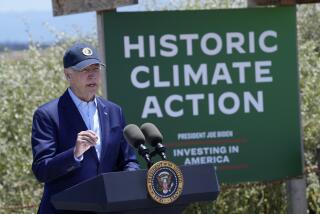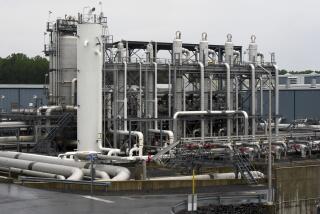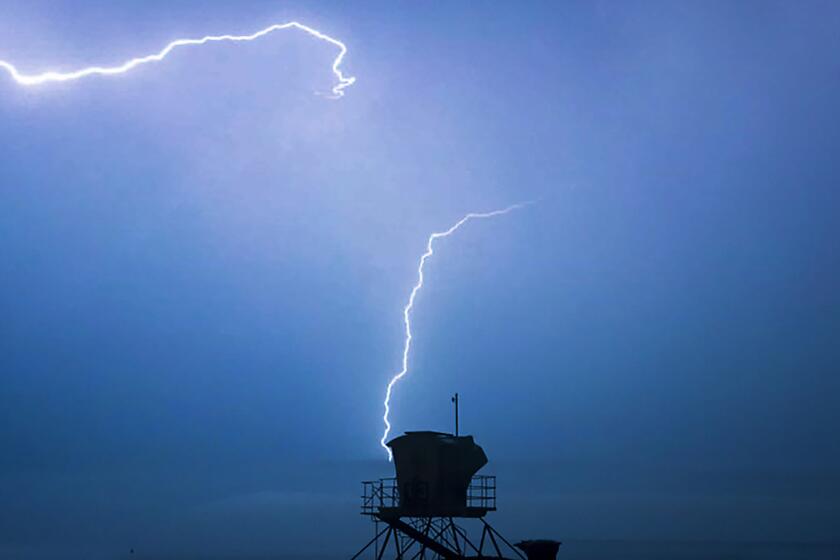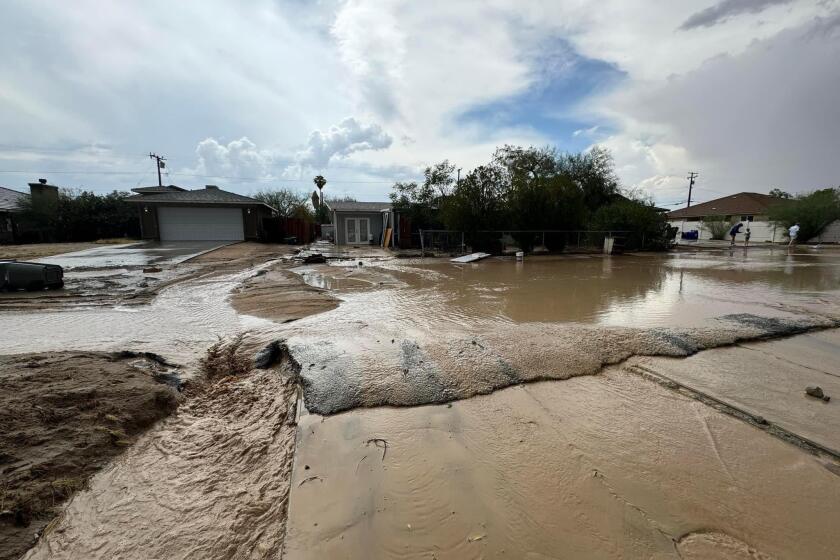For Biden, protecting the environment means filling vacant science jobs

Polluting factories go uninspected by the U.S. Environmental Protection Agency. Leadership positions sit vacant at the U.S. Geological Survey’s climate science centers. And U.S. Department of Agriculture research into environmental issues important to farmers is unfinished.
The ranks of scientists who carry out environmental research, enforcement and other jobs fell in several agencies — sharply in some cases — under President Trump, federal data shows. Veteran staffers say many workers retired, quit or moved to other agencies amid pressure from an administration they regarded as hostile to science and beholden to industry.
That poses a challenge for President Biden, who must rebuild a depleted and demoralized workforce to make good on promises to tackle climate change, protect the environment and reduce pollution that disproportionately affects poor and minority communities.
“It’s going to take a long time to undo the damage that the Trump administration has done,” said Kyla Bennett, a former EPA enforcement official who now directs science policy for Public Employees for Environmental Responsibility, a watchdog group. Bennett said many scientists left as Trump’s administration rolled back regulations and undercut climate work, leaving agencies with less experience, a work backlog and unfinished research.
Toward a more sustainable California
Get Boiling Point, our newsletter exploring climate change, energy and the environment, and become part of the conversation — and the solution.
You may occasionally receive promotional content from the Los Angeles Times.
Employment data show more than 670 science jobs lost at the EPA, 150 at the USGS, which researches human-caused climate change and natural hazards, and 231 at the U.S. Fish and Wildlife Service.
At the USDA, more than one-third of staff members — almost 200 people — left the agency’s Economic Research Service and its National Institute of Food and Agriculture in the 2019 fiscal year, after the Trump administration moved their jobs from Washington, D.C., to the Kansas City, Mo., area.
“The loss of experienced staff was deep,” said spokesman Matt Herrick, who provided figures showing even deeper losses at one point. “We lost too many of the nation’s best economists and agricultural scientists.”
Gone are specialists working on such things as crops, wetland loss, climate policy and soil conservation, said Laura Dodson, acting vice president of the union representing research service workers.
The findings on science job losses are based on payroll records released to the advocacy group Union of Concerned Scientists through a public records request and on USDA attrition data.
Not all agencies saw drops under Trump, and the drain of science jobs from the USGS and the EPA began before he took office. The EPA lost more than 3,500 employees — 22% of its workforce — over the past two decades, according to budget documents. At the USGS, 1,230 science jobs were lost since 2000, a 17% drop.
Environmental justice groups in California and elsewhere are muscling for influence in Washington, unleashing long-simmering tensions in the broader movement.
Priorities change from one presidency to the next, said Daren Bakst, senior fellow with the conservative Heritage Foundation. Under Trump, the EPA emphasized cleanups of Superfund sites and shifted away from climate change.
“It doesn’t mean anything improper’s been done,” said Bakst. “There’s going to be ideological people within the federal government civil service, and some didn’t want to work in the Trump administration.”
But those who experienced cuts under Trump say his administration brought something new: intense political pressure aimed at agencies at odds with its pro-industry agenda and a willingness to thwart legitimate science.
A 2018 Office of Inspector General investigation at the Department of Interior, which oversees the USGS, found that 16 employees assigned new duties under Trump viewed their moves as retribution for work on climate change, energy and conservation. And the administration removed or blocked some knowledgeable scientists from boards that advise the EPA about everything from air pollution to toxic chemicals in favor of industry insiders, said Christopher Zarba, former director of the EPA’s Science Advisory Board.
“It’s very intentional, to get rid of experts because they stand in the way of unfettered industrial use of federal resources,” said Joel Clement, a former Interior Department climate scientist who resigned in 2017 and filed a still-pending whistleblower complaint following his reassignment to an accounting office. Clement is now a senior research fellow at Harvard University and the Union of Concerned Scientists.
Scientists say federal environmental research could be hobbled for years by the loss of experienced scientists.
“We’re just not putting out as many reports; we’re not putting out as much research because there’s not enough staff to get it done,” said the USDA’s Dodson, who works on biotechnology issues, including genetically modified seeds.
The Trump administration said the relocation to Kansas City was intended to save money. But Dodson believes it was designed to get rid of career scientists, noting that then-acting White House Chief of Staff Mick Mulvaney bragged that the move helped streamline government by encouraging scientists to quit.
“This was meant to hinder the work of a scientific agency,” Dodson said.
A divided Congress could make climate action harder, but there’s a huge amount Joe Biden can do on his own.
At the EPA, remaining staff are taking on more work, leaving little time to train newer employees, said Justin Chen, an environmental engineer and union representative in the Dallas enforcement division.
Inspections and compliance monitoring by the agency fell 28% under Trump, EPA figures show. New civil enforcement cases fell more than 20%. Criminal cases increased over that period, although the number of defendants charged dropped sharply.
Almost 200 scientists left the EPA’s Office of Research and Development, including Dan Costa, who headed the climate and energy research program until 2018, when he said it became clear the Trump administration did not value scientists or climate research.
“We had a big bull’s-eye on us,” Costa said. “People couldn’t use the word ‘climate.’”
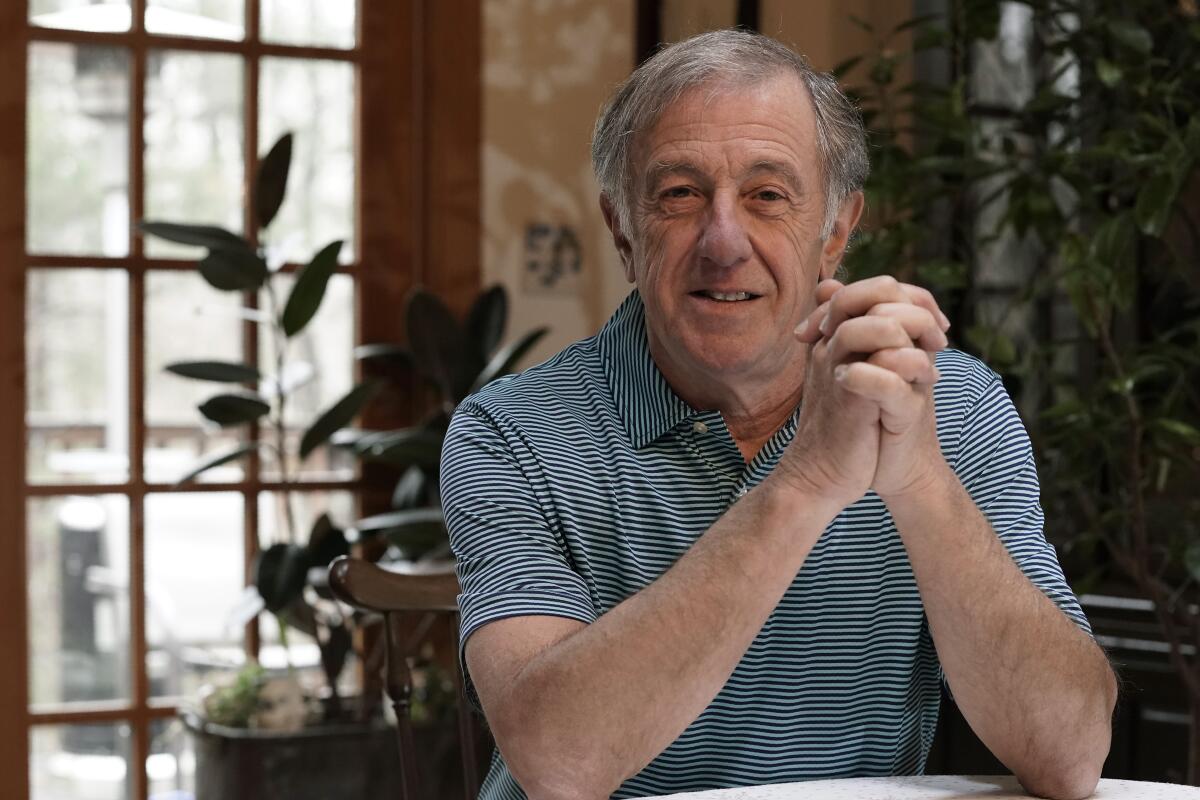
The EPA did not answer emailed questions about staff losses. The Fish and Wildlife Service did not respond to a request for comment.
Key USGS leadership posts went unfilled at regional climate science centers and approval of research grants was delayed, said Robin O’Malley, who spent 38 years with the agency and retired in 2019 as director of the center in Colorado.
“We could barely do anything,” O’Malley said. “It’s been a morale disaster and an operational disaster.”
Some delays occurred in research to help deal with increasingly intense wildfires in the Rocky Mountains, and in studies of migratory birds facing habitat losses, scientists said.
A USGS spokesman declined to answer questions about research delays and job losses but said hiring decisions are moving forward.
While Biden has promised to make climate science a top priority, scientists say it will take time to hire and train new staff.
Meantime, there are fewer experts to build criminal cases against polluters, said Joyce Howell, an EPA attorney in Philadelphia. The effects could be felt for years, she added, because it takes a long time to investigate and prosecute violations.
“You just don’t have as many environmental cases, you don’t prosecute everyone,” Howell said.


